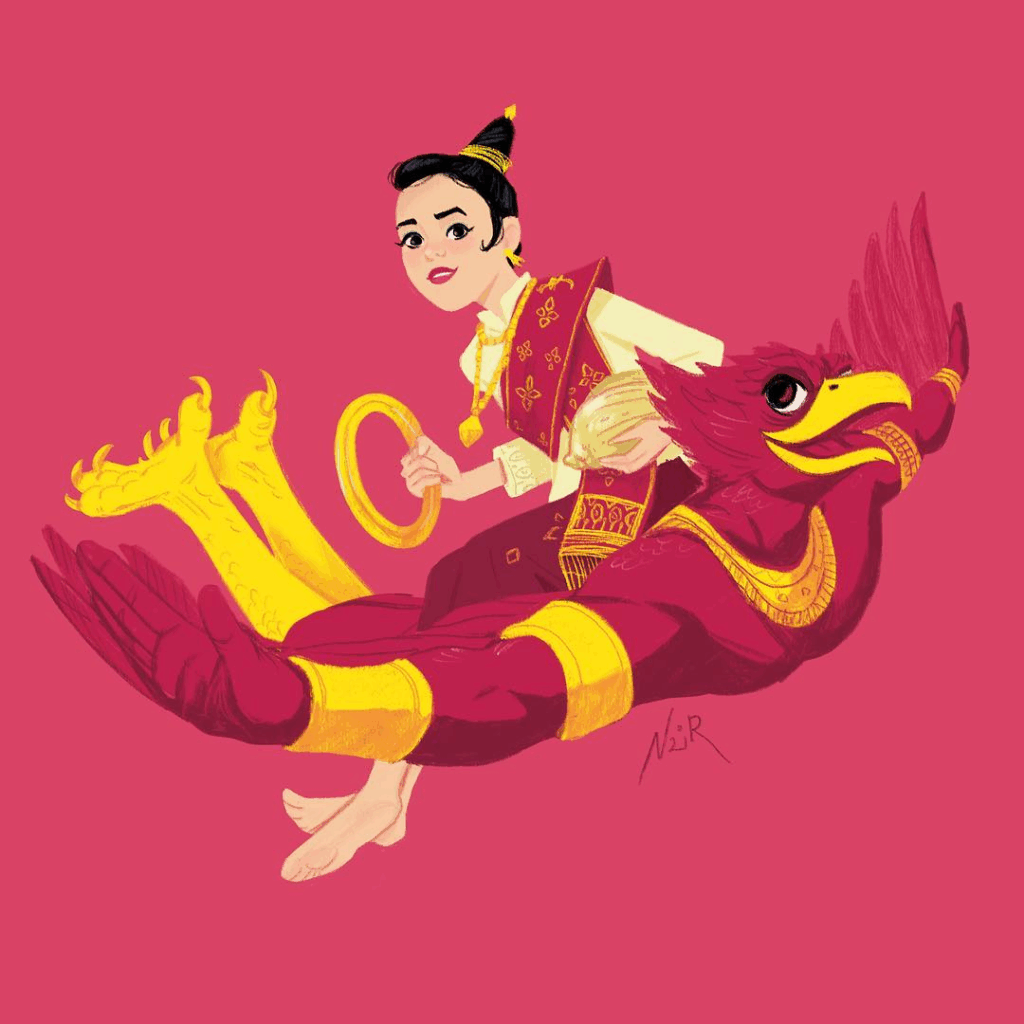2025’s leader of the procession is Thoungsa Thevi, the goddess of Sunday.
Songkan starts on April 14, and Nang Sangkhan is represented by the Sunday princess, Nang Thoungsa Thevi. During the parade this year, Nang Sangkhan rides a Garuda while holding a disc and a conch shell.

The Celestial Family
Each year, a Nang Sangkhan sister is chosen to wash and carry their father’s severed head—ensuring it never touches earth, sea, or sky to prevent the end of the world.
FAQs
What’s the difference between “Songkan” and “Sangkhan”?
“Sangkhan” refers to the celestial entities, particularly the seven Nang Sangkhan sisters who oversee the cosmic rituals of Lao New Year. “Songkan,” on the other hand, directly translates to “New Year” in Lao and marks the actual transition period or phase of time during the celebration. The terms are closely linked, but one refers to divine figures, the other to the celebration itself.
How did Nang Sangkhan become part of Lao New Year?
The legend of Nang Sangkhan originates from the myth of King Kabinlaphom, whose severed head must be carried each year by one of his daughters to prevent global destruction. Over time, this ritual became linked to the annual solar transition, marking the Lao New Year. The sister who carries the head symbolizes the ruling guardian for that year’s cycle.
What’s the significance of the weapons the sisters carry?
Each weapon or item carried by the sisters reflects a facet of their divine responsibility and personality. From swords and lightning rods to conch shells and vina, these objects represent their power to balance forces of chaos, wisdom, nature, and change.
Why do the sisters carry those items?
The items aren’t just symbolic—they’re tied to ancient attributes passed down through oral tradition. Each sister’s tools reflect their elemental nature and their role in protecting the world during their annual procession. For example, a trident might represent authority over water and destruction, while a walking cane reflects wisdom and age.
Who is King Kabinlaphom based on?
Kabinlaphom is believed to be inspired by Hindu and Buddhist cosmological kings and celestial beings, likely influenced by the Hindu deity Brahma or the Buddhist concept of a powerful deva. His myth echoes similar stories found in regional folklore where riddles, cosmic cycles, and decapitation serve as metaphors for the cycle of time and wisdom.








